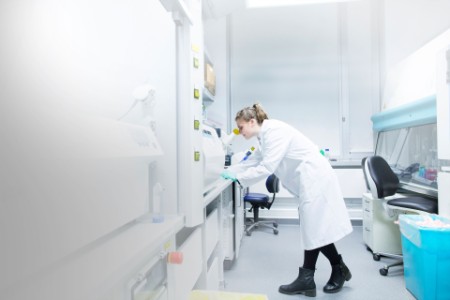How can tax operations collaboration help strategy and growth?
Since its founding in 1885, Boehringer Ingelheim, a German research-driven global pharmaceutical company, has been powered by ingenuity and innovation, working on therapies that transform lives — today and for generations to come.
Family-owned throughout its history, the company is staying true to its roots in the city of Ingelheim in southwestern Germany. Today, Boehringer Ingelheim, ranks among the world’s leading research-driven biopharmaceutical companies, with more than 52,000 employees, having generated a revenue of more than USD 26.4b in 2022.
A key challenge: tax authorities embracing digital
While serving over 130 markets, regulatory challenges and tax-related obligations have grown consistently over the last few years. As tax authorities operate in an increasingly digital environment, tax departments feel the enhanced pressure to manage regulatory complexity, fulfil demands for detailed information and ensure every subsidiary submits tax declarations in line with local requirements.
Malte Fidler, Boehringer Ingelheim’s Global Head of Tax & Trade Governance, oversees finding efficient and effective ways to navigate the complex and demanding tax world. To Fidler, responding to new demands was all about taking a page out of Boehringer Ingelheim’s book, acting with ingenuity and a first-mover mentality. Fidler focused on tax operating model innovation in different dimensions — locally and globally — with regard to the past, present and future.
Designing a new Tax Operating Model
“We chose to counter the changed landscape with a digital transformation of our tax operating model as a whole,” Fidler says. "It was clear that we had to move away from isolated local perspectives on tax compliance toward an enriched and more centralized model that also prominently puts technology in play.”
In the case of Boehringer Ingelheim, some country offices had in-house tax departments with dedicated experts, while others did not. Hence, workflows, standards and processes differed from country to country with significantly increasing tax requirements possibly leading to compliance risks in the future. These were reasons enough for Fidler and his team to redesign, standardize and scale the local tax compliance process.
Tax compliance must be ensured worldwide, not just in a single country
“We wanted to move fast and challenge the status quo of common tax compliance practices. Our goal was clear — raise quality, boost efficiency and leverage new ways of sourcing and technology to ensure global tax compliance,” Fidler says about designing the new tax operating model. This was an ambitious agenda, given Boehringer Ingelheim’s global structure and historically grown processes.

Turning to EY for resources, processes and technology
Fidler and the Boehringer Ingelheim team kicked off their tax operating model redesign. The tax team went for a two-track approach:
1. In countries with an established tax department, a specialized Boehringer Ingelheim team was still responsible for a certain review process, while an EY team stepped in for local compliance, and the remaining tasks stayed with Boehringer Ingelheim’s tax department.
2. In countries without a dedicated tax department, all tax tasks were transferred into the newly designed centralized co-sourcing model.
This was a future-oriented approach, requiring not only transformative changes, but also the setup of a new joint central team into which tax operations were bundled.
Building a tax operations team and using the Boehringer Ingelheim shared service center organization
Katja Kief, Boehringer Ingelheim’s Global Head of Tax Operations, was responsible for coordinating with the country departments to ensure a smooth transformation. Kief led a taskforce that introduced two new elements into Boehringer Ingelheim’s tax compliance formula. This included the principle of co-sourcing and using the company’s shared service center organization, called Global Business Services (GBS).
The company decided to leverage existing GBS centers in Buenos Aires (Argentina), Wroclaw (Poland) and Manila (Philippines). “In Manila for instance, we ramped up a dedicated tax services team for which we recruited people interested in taxes and accounting,” Kief explains. “This team was then trained to pull and process local tax data without the need to further involve local resources.”
Prior to automation and optimization, understanding and analyzing the underlying data retrieval and processing steps was key for success. Even well-established processes had to be scrutinized, optimized and transferred over into a holistic and integrated solution as part of the tax operating model.
Kief was mindful of the fact that tax compliance was about proper documentation, and also often required local insights. Hence, she and Fidler engaged the EY organization for the last mile.
Local EY teams take over local reporting to country authorities, monitored by a joint central team
“The EY organization brought experienced people across its global network as well as leading technology in the form of its Microsoft-powered Global Tax Platform, allowing greater adaptability toward our specific needs. We felt confident in entrusting the EY team to take over quality assurance toward country-specific authorities,” Kief says.
This way, she says, the newly built central tax compliance team could grow and operate safely, with the experienced EY team and its global network of tax experts covering their backs, led by Alexander Vetten, EY Global Compliance & Reporting and Tax Innovation Leader at Ernst & Young Wirtschaftsprüfungsgesellschaft. “The Boehringer Ingelheim team built a future-oriented and agile global operating model for their tax function. It’s an honor to serve Boehringer Ingelheim with our proven execution model and truly integrated network of country subject-matter experts — all following effective and clear processes,” Vetten says.
Ready to start
Within six months, the Boehringer Ingelheim and the EY team were ready to test the new setup, based on a previously migrated SAP S4/HANA system. This provided fast data and was standardized with the newly onboarded tax operations and cross-competency EY teams. The testing happened after three months of transition and preparation by the Boehringer Ingelheim and EY teams.
Starting with important markets such as Canada, Thailand and Singapore, Kief and Fidler were ready to deploy their new tax operating model.

A reimagined tax workflow: an exercise in tech and trust
They selected these markets with a purpose in mind. While Singapore was a suitable example for a relatively small Boehringer Ingelheim operation, Thailand was selected due to its unique challenges with regard to the country’s withholding tax regime and a challenging language situation. Canada, a major market for Boehringer Ingelheim, has a rather complex indirect taxation regime, which is why it was included in the "stress test”. The Boehringer Ingelheim tax team went live with the pilot, using the new, co-sourced system — with taskforce leader Kief satisfied from day one of operations.
“From the very beginning, the formula worked well,” Kief says. “We were able to recruit great personnel for our Shared Service Center approach faster than we anticipated. The work with the EY team was basically plug-and-play, which was a huge success factor to make things run reliably quickly.”
Country professionals experienced the change as an improvement
According to Fidler, the local organizations were particularly enthusiastic. “Throughout the country organizations, the feedback was very positive. It was important for us that our local tax and finance functions do not experience this transformation as a taking away of competencies, but as an effort to relieve them of time-consuming manual labor, which we were now able to organize differently or automate through technology.”
To Kief, technology was key to making things work with a new and agile design. “We did our homework in implementing a technological environment. This is now well-positioned to roll out further SAP tax compliance tools to raise the quality of data even more and connect horizontal monitoring with reliable and centralized process designs.”
Reflecting on their transformation journey, both Kief and Fidler emphasize that despite all the technology at play with Boehringer Ingelheim’s SAP infrastructure and the EY Microsoft-powered Global Tax Platform, the new tax operating model is also built upon trust and transparency. “We trust our service provider to deliver the highest quality and make the whole system work every day. In the end, this is a question of people interacting with trust and solving complex and pressing problems together,” Fidler says.
Commencement of next rollout wave
EY project leader Alexander Vetten points out that it has been of great importance for Boehringer Ingelheim to keep crucial changes in the global tax environment on their radar. “This is important, especially with the digitalization of tax authorities and the growing number of reporting requirements,” he says. “These changes are, have been and will continue to be drivers of complexity. This means, in addition to excellent local tax knowledge, the company’s IT expertise must match the ability to design and work with globally aligned processes and algorithms. For Boehringer Ingelheim’s future-oriented tax operating model, these were critical success factors.”
Building on the pilot’s remarkable success, Boehringer Ingelheim started the next implementation wave about 11 months after the project began, by adding 15 more countries to the new co-sourcing system. That number is expected to grow to 60 countries by 2024.
Around 84% of tax and finance executives are actively futureproofing their operating model
“We are extremely proud that our EY team is supporting Boehringer Ingelheim’s leading-edge transformation globally with over 3,500 deliverables in the fields of indirect and direct tax compliance, tax accounting, withholding tax and tax controversy,” says Ute Benzel, EY Europe West Tax & Finance Operate and Legal Managed Services Leader.
“Finding answers to digital transformation is what all tax departments are up against, not just at Boehringer Ingelheim. There is a constant demand for personnel in a highly competitive environment, paired with the pressure to innovate and automate.
Eighty-four percent of the 1,600 tax and finance executives queried in the 2022 EY Tax and Finance Operate Survey responded that they wanted to actively futureproof their tax and finance operating models. “Co-sourcing and managed services approaches can provide a lot of benefits such as improved efficiency, increased flexibility, enhanced security, and improved governance and control. This enables organizations to stay ahead of the curve in terms of innovation, competitiveness and compliance,” Benzel says.
In Summary
The story of Boehringer Ingelheim’s new tax operating model shows how digital transformation and co-sourcing can help tax executives respond to major challenges around innovation pressure through long-term improvements without cutting personnel or reducing quality.
The team
Contact us
Interested in the changes we have made here,
contact us to find out more.



